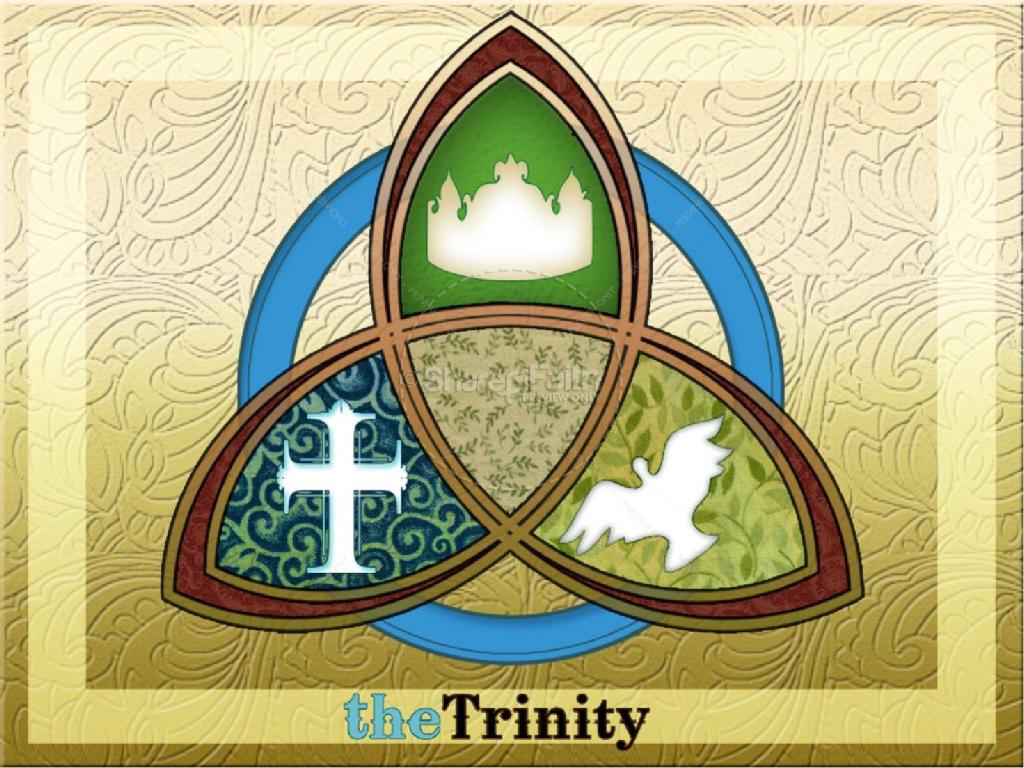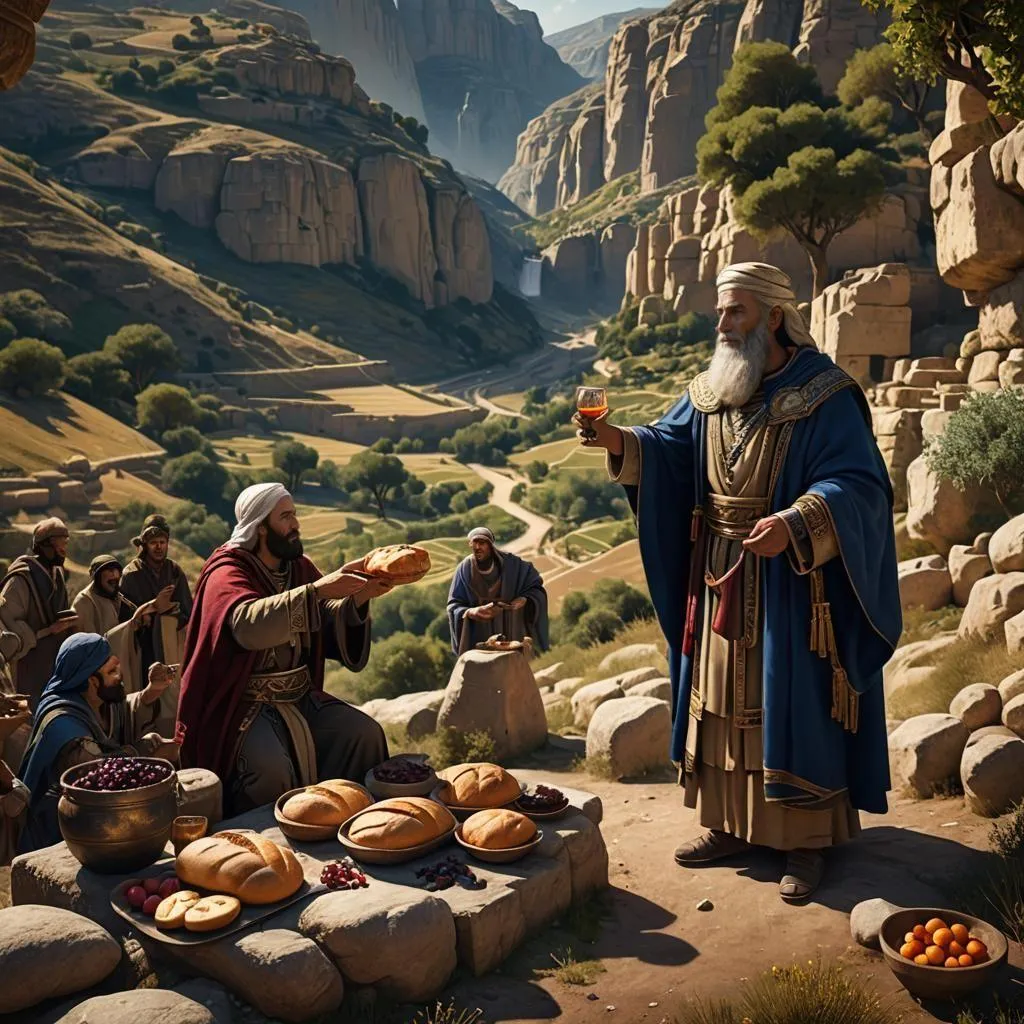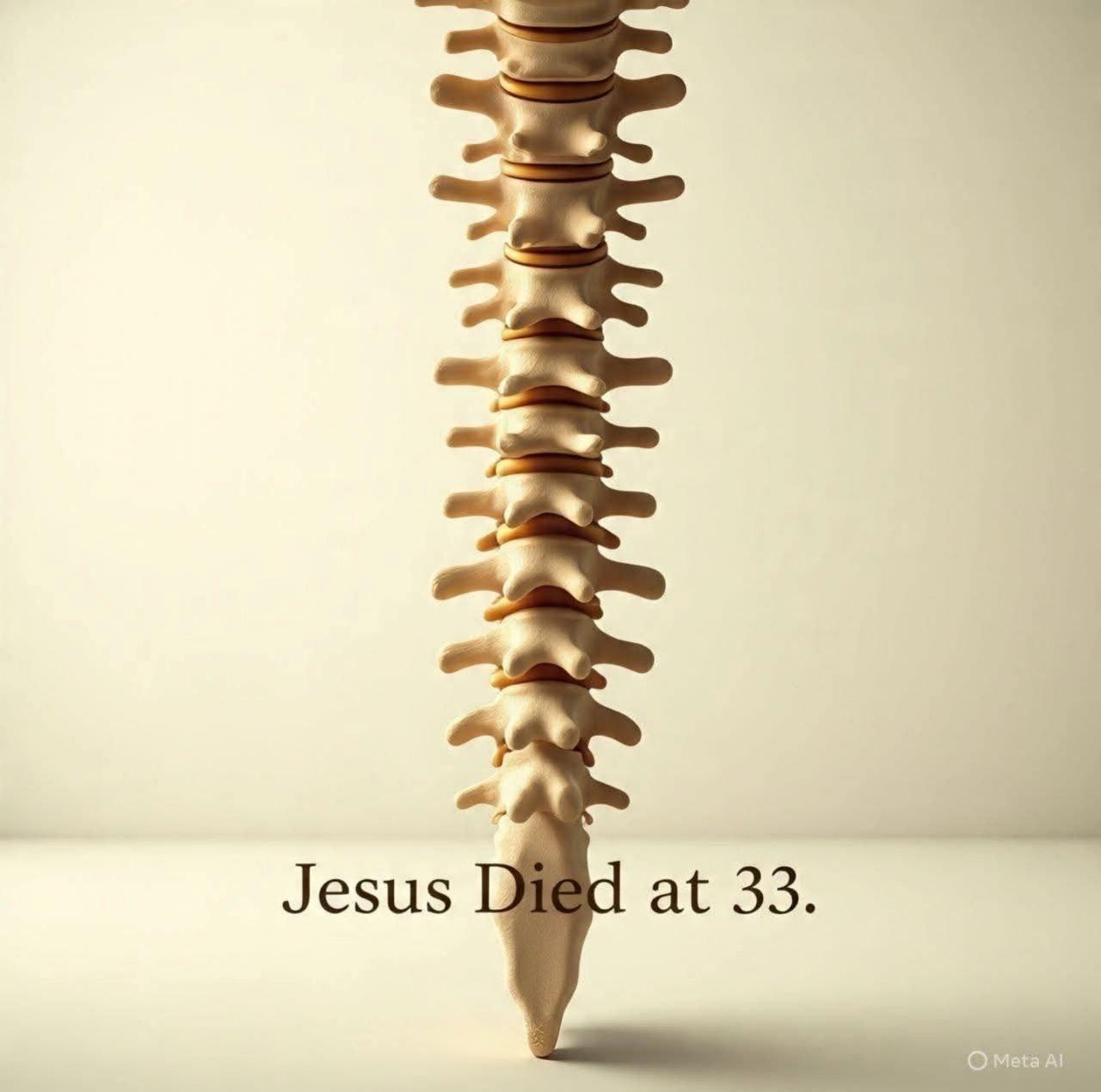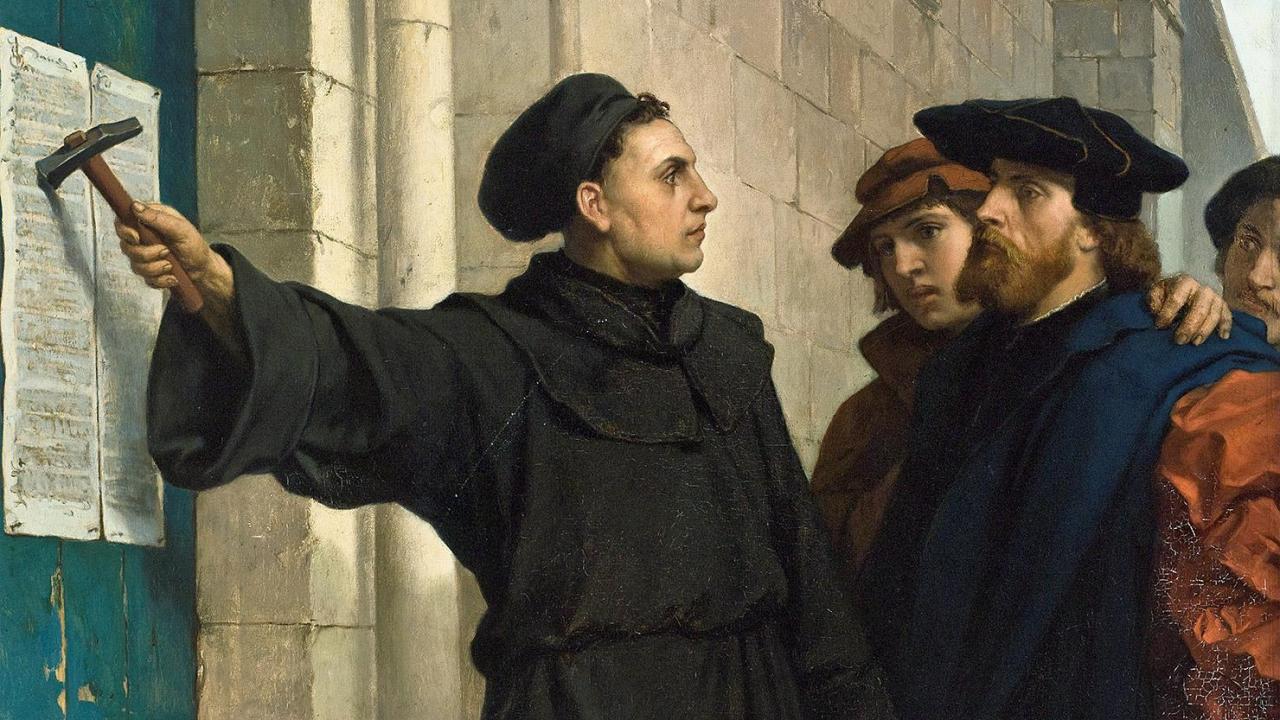The Eighth Day

What is the “eighth day” you may ask; surely we know there are only seven days in a week!
But in ancient times, Sunday – which was also known as the first day of the week, was also referred to as the eighth day by Christians.
This day was considered a holy day from the earliest of times by Christians (despite some weak arguments that Constantine, or the Pope, “changed the Sabbath” some 400 years later), and this was because it was the day on which Christ rose from the dead!
I will make a beginning of the eighth day, that is, a beginning of another world. For that reason, also, we keep the eighth day with joyfulness, the day on which Jesus rose again from the dead.
Barnabas 15:8-9
Barnabas, in his epistle, makes the first recorded mention of this day as specifically called the “eighth” which is as early as somewhere between 70 - 130 AD.
But the concept of an "eighth day" isn't new and is found throughout the Scriptures in the Old Testament, specifically in the last of the great feasts: the feast of booths (Leviticus 23:33 onwards), and circumcision on the eighth day after birth. The priests and Nazirites also had seven days of cleansing before offering sacrifices specifically on the eighth day (Numbers 6, Leviticus 8:33ff).
The apostles pick up on these themes, like with the eight people, including Noah, who were “saved through water” (1 Peter 3:20) and how we now have a spiritual circumcision of the heart instead of a physical procedure (Romans 2:29). But if we look back at the gospel in John 7:37-38 and also John 8:12, we can see that during the festival of booths Jesus used the symbols of that festival (water and light) to declare that he himself is the true fulfillment of that! You can read a more in depth explanation of that at jewsforjesus.org.
After Barnabas, we find scattered references in other early writings which show understanding of Christ's fulfillment in these things – such as Justin Martyr, who wrote saying that the eighth day “possessed a certain mysterious significance, which the seventh day did not”; and Cyprian who wrote that this was also the fulfilment of the Jewish practice of circumcision on the eighth day after birth (Genesis 17:12) which was a shadow of Christ rising from the dead to give us “the circumcision of the Spirit”. This symbolism and spiritual fulfillment carries on throughout various early authors too, and is also sometimes referred to as the “Lord’s Day”, which is a phrase you might recognise from Revelation 1:10 too.
But every Lord's day gather yourselves together, and break bread, and give thanksgiving after having confessed your transgressions, that your sacrifice may be pure.
Didache 14:1
As early as Acts, we can see the believers all began to gather and teach on a Sunday (the first day):
Acts 20:7
On the first day of the week, when we met to break bread, Paul was holding a discussion with them; since he intended to leave the next day, he continued speaking until midnight.
1 Corinthians 16:2
On the first day of every week, each of you is to put aside and save whatever extra you earn, so that collections need not be taken when I come.
Praise and worship was held on Sunday’s because of the resurrection – this day was to be a celebration of what Jesus accomplished and what that now means for the rest of us who are in Christ: being a part of the New Covenant, which makes us a new creation through baptism and through our outworking of the faith, we reconcile the world back to God as co-workers with Jesus (1 Corinthians 3:9)!
2 Corinthians 5:18-19
All this is from God, who reconciled us to himself through Christ, and has given us the ministry of reconciliation; that is, in Christ God was reconciling the world to himself, not counting their trespasses against them, and entrusting the message of reconciliation to us.
Resting with God
This is God showing that things work differently now. No longer is he only found in a physical brick and mortar temple, or a specific holy place (as Jesus points out in John 4:21) – now God dwells with us and in us because our bodies ARE the temple of the Holy Spirit (1 Corinthians 6:19)!
Because of that, we have now entered the fulfillment of the Sabbath – which is Jesus, who is our Sabbath rest.
Matthew 11:28-29
Come to me, all you that are weary and are carrying heavy burdens, and I will give you rest. Take my yoke upon you, and learn from me; for I am gentle and humble in heart, and you will find rest for your souls.
Jesus is the fulfillment of all the types and shadows which the Old Testament predicted (Colossians 2:16-17; Romans 14:5-6), and that includes having a certain day for rest and worship.
Hebrews 4:3, 9-10
For we who have believed enter that rest … So then, a sabbath rest still remains for the people of God; for those who enter God’s rest also cease from their labors as God did from his.
Dwelling with God
Compare what Paul says about believers being the temple, with what is declared in Revelation about this very concept:
2 Corinthians 6:16b
For we are the temple of the living God; as God said,
“I will live in them and walk among them,
and I will be their God,
and they shall be my people.”
Revelation 21:3
And I heard a loud voice from the throne saying,
“See, the home of God is among mortals.
He will dwell with them;
they will be his peoples,
and God himself will be with them”
This is why everything is new! Heaven will never be the same again, and neither will the Earth! God has set up a new temple where he dwells now: in us!
Paul had grasped this concept and if you read through his letters you will notice that he really hammers this point home quite often! We need to stop viewing everything so physically, and look beyond to see what God has done in the Spirit.
2 Corinthians 5:17
So if anyone is in Christ, there is a new creation: everything old has passed away; see, everything has become new!
Made new by God
If we are “in Christ” then WE are that new creation! Hence why, in the preceding verse, Paul writes that we should “regard no one from a human point of view” if they are believers.
Again we see this theme in Colossians 1:19-20, where Paul writes that “God was pleased” to reconcile all things to himself, whether “on Earth or in Heaven” – in other words, all of Creation.
This again is echoed in Rev 21:5, where “the one on the throne” (ie. God) declares: “See, I am making all things new.”
Reconcile means “the restoration of friendly relations”, so now if God is on friendly terms with “all things” in Heaven or Earth, and has given us the “ministry of reconciliation” as “co-workers with Christ”, then this must make us think about what a new earth really means. You don’t destroy something you have reconciled with, do you?
This is why baptism was seen as so important in the early church, and not so much as a symbolic act of faith, and definitely not an optional choice if you wanted to be part of the Body of Christ!
The waters of baptism is where we see the new creation really taking place; this is where we become “in Christ” and are raised new in our spiritually resurrected bodies.
Colossians 2:12
When you were buried with him in baptism, you were also raised with him through faith in the power of God, who raised him from the dead.
Colossians 3:1
So if you have been raised with Christ, seek the things that are above, where Christ is, seated at the right hand of God.
Ephesians 2:5-6
…[God,] even when we were dead through our trespasses, made us alive together with Christ—by grace you have been saved— and raised us up with him and seated us with him in the heavenly places in Christ Jesus
Romans 6:4
Therefore we have been buried with him by baptism into death, so that, just as Christ was raised from the dead by the glory of the Father, so we too might walk in newness of life.
Also, just a interesting side-note here: baptismal fonts in the traditional Church buildings are often Octagonal in shape due to the symbolism of the eighth day and baptism representing new creation!
A new Kingdom with God
Not only are we within the new creation, raised up and seated with Christ in the heavenlies, but we are co-workers in this new ministry! We work together with God to bring all of Creation back to Him, and we do this as ambassadors for Christ because we are also now within the Kingdom of God and have that authority through the Spirit who dwells in us!
As Jesus told the Pharisees in Luke 17:21, “the kingdom of God is among (or within) you”. Paul also writes to the Colossians (1:13-14) and tells them that God “has rescued us from the power of darkness and transferred us into the kingdom of his beloved Son”.
This is our reality. If we are in Christ, then we are made new, raised up and are in the Kingdom of God as ambassadors. This is the Eighth Day.
Take hold of this truth and let it transform you.
Further Reading:
- Barnabas, ch 15:8-9 – http://www.earlychristianwritings.com/text/barnabas-lake.html
- Justin Martyr, Dialogue with Trypho, ch. 24 – http://www.earlychristianwritings.com/text/justinmartyr-dialoguetrypho.html
- Cyprian, Epistle 58:4 – http://www.newadvent.org/fathers/050658.htm
- Eighth day quotes – http://preachersinstitute.com/2013/06/05/the-eighth-day/
- http://www.patheos.com/blogs/geneveith/2014/04/the-eighth-day/
- http://feedingonchrist.com/theological-significance-eighth-day/
- http://frankviola.org/2015/01/26/thesabbath/
- Didache – http://www.earlychristianwritings.com/text/didache-roberts.html
- https://thesacredfaith.co.uk/index.php?page=home&perma=1459070845&article=raised-in-the-heavenlies
- https://thesacredfaith.co.uk/index.php?page=home&perma=1452090721&article=who-is-the-new-jerusalem
- https://en.wikipedia.org/wiki/Lord%27s_Day
- http://www.jcblog.net/hebrews/4/9-10/true-sabbath-rest-through-christ
- Sabbath was for Isreal: http://members.shaw.ca/homechristian/docs/articles/SabbathObservance.htm
- http://www.hebrew4christians.com/Holidays/Fall_Holidays/Sukkot/sukkot.html
- https://jewsforjesus.org/publications/newsletter/october-1998/tabernacles
- https://gotquestions.org/Constantine-Sabbath.html
Leave a comment Like Back to Top Seen 14.8K times Liked 0 times
Enjoying this content?
Support my work by becoming a patron on Patreon!
By joining, you help fund the time, research, and effort that goes into creating this content — and you’ll also get access to exclusive perks and updates.
Even a small amount per month makes a real difference. Thank you for your support!
Subscribe to Updates
If you enjoyed this, why not subscribe to free email updates and join over 864 subscribers today!
My new book is out now! Order today wherever you get books
Recent Posts
Luke J. Wilson | 19th August 2025 | Fact-Checking
A poetic post has been circulating widely on Facebook, suggesting that our anatomy mirrors various aspects of Scripture. On the surface it sounds inspiring, but when we take time to weigh its claims, two main problems emerge. The viral post circulating on Facebook [Source] First, some of its imagery unintentionally undermines the pre-existence of Christ, as if Jesus only “held the earth together” for the 33 years of His earthly life. Second, it risks reducing the resurrection to something like biological regeneration, as if Jesus simply restarted after three days, instead of being raised in the miraculous power of God. Alongside these theological dangers, many of the scientific claims are overstated or symbolic rather than factual. Let’s go through them one by one. 1. “Jesus died at 33. The human spine has 33 vertebrae. The same structure that holds us up is the same number of years He held this Earth.” The human spine does generally have 33 vertebrae, but that number includes fused bones (the sacrum and coccyx), and not everyone has the same count. Some people have 32 or 34. More importantly, the Bible never says Jesus was exactly 33 when He died — Luke tells us He began His ministry at “about thirty” (Luke 3:23), and we know His public ministry lasted a few years, but His precise age at death is a tradition, not a biblical statement. See my other recent article examining the age of Jesus here. Theologically, the phrase “the same number of years He held this Earth” is problematic. Jesus did not hold the world together only for 33 years. The eternal Word was with God in the beginning (John 1:1–3), and “in Him all things hold together” (Colossians 1:17). Hebrews says He “sustains all things by His powerful word” (Hebrews 1:3). He has always upheld creation, before His incarnation, during His earthly ministry, and after His resurrection. To imply otherwise is to risk undermining the pre-existence of Christ. 2. “We have 12 ribs on each side. 12 disciples. 12 tribes of Israel. God built His design into our bones.” Most people do have 12 pairs of ribs, though some are born with an extra rib, or fewer. The number 12 is certainly biblical: the 12 tribes of Israel (Genesis 49), the 12 apostles (Matthew 10:1–4), and the 12 gates and foundations of the New Jerusalem (Revelation 21). But there’s no biblical connection between rib count and these symbolic twelves. This is a case of poetic association, not design woven into our bones. The only real mention of ribs in Scripture is when Eve is created from one of Adam’s ribs in Genesis 2:21–22, which has often led to the teaching in some churches that men have one less rib than women (contradicting this new claim)! 3. “The vagus nerve runs from your brain to your heart and gut. It calms storms inside the body. It looks just like a cross.” The vagus nerve is real and remarkable. It regulates heart rate, digestion, and helps calm stress, and doctors are even using vagus nerve stimulation as therapy for epilepsy, depression, and inflammation showing it really does “calm storms” in the body. But it does not look like a cross anatomically. The language about “calming storms” may echo the way Jesus calmed the storm on the Sea of Galilee (Mark 4:39), but here again the poetic flourish stretches science (and Scripture) beyond what’s accurate. 4. “Jesus rose on the third day. Science tells us that when you fast for 3 days, your body starts regenerating. Old cells die. New ones are born. Healing begins. Your body literally resurrects itself.” There’s a serious theological problem here. To equate Jesus’ resurrection with a biological “regeneration” after fasting is to misrepresent what actually happened. Fasting can indeed trigger cell renewal and immune repair, but it cannot bring the dead back to life. It’s still a natural process that happens...
Luke J. Wilson | 08th July 2025 | Islam
“We all worship the same God”. Table of Contents 1) Where YHWH and Allah Appear Similar 2) Where Allah’s Character Contradicts YHWH’s Goodness 3) Where Their Revelations Directly Contradict Each Other 4) YHWH’s Love for the Nations vs. Allah’s Commands to Subjugate 5) Can God Be Seen? What the Bible and Qur’an Say 6) Salvation by Grace vs. Salvation by Works Conclusion: Same God? Or Different Revelations? You’ve heard it from politicians, celebrities, and even some pastors. It’s become something of a modern mantra, trying to shoehorn acceptance of other beliefs and blend all religions into one, especially the Abrahamic ones. But what if the Bible and Qur’an tell different stories? Let’s see what their own words reveal so you can judge for yourself. This Tweet recently caused a stir on social media 1) Where YHWH and Allah Appear Similar Many point out that Jews, Christians, and Muslims share a belief in one eternal Creator God. That’s true — up to a point. Both the Bible and Qur’an describe God as powerful, all-knowing, merciful, and more. Here’s a list comparing some of the common shared attributes between YHWH and Allah, with direct citations from both Scriptures: 26 Shared Attributes of YHWH and Allah According to the Bible (NRSV) and the Qur’an Eternal YHWH: “From everlasting to everlasting you are God.” — Psalm 90:2 Allah: “He is the First and the Last…” — Surah 57:3 Creator YHWH: “In the beginning God created the heavens and the earth.” — Genesis 1:1 Allah: “The Originator of the heavens and the earth…” — Surah 2:117 Omnipotent (All-Powerful) YHWH: “Nothing is too hard for you.” — Jeremiah 32:17 Allah: “Allah is over all things competent.” — Surah 2:20 Omniscient (All-Knowing) YHWH: “Even before a word is on my tongue, O LORD, you know it.” — Psalm 139:4 Allah: “He knows what is on the land and in the sea…” — Surah 6:59 Omnipresent (Present Everywhere) YHWH: “Where can I go from your Spirit?” — Psalm 139:7–10 Allah: “He is with you wherever you are.” — Surah 57:4 Holy YHWH: “Holy, holy, holy is the LORD of hosts.” — Isaiah 6:3 Allah: “The Holy One (Al-Quddus).” — Surah 59:23 Just YHWH: “A God of faithfulness and without injustice.” — Deuteronomy 32:4 Allah: “Is not Allah the most just of judges?” — Surah 95:8 Merciful YHWH: “The LORD, merciful and gracious…” — Exodus 34:6 Allah: “The Most Gracious, the Most Merciful.” — Surah 1:1 Compassionate YHWH: “As a father has compassion on his children…” — Psalm 103:13 Allah: “He is the Forgiving, the Affectionate.” — Surah 85:14 Faithful YHWH: “Great is your faithfulness.” — Lamentations 3:22–23 Allah: “Indeed, the promise of Allah is truth.” — Surah 30:60 Unchanging YHWH: “For I the LORD do not change.” — Malachi 3:6 Allah: “None can change His words.” — Surah 6:115 Sovereign YHWH: “The LORD has established his throne in the heavens…” — Psalm 103:19 Allah: “Blessed is He in whose hand is dominion…” — Surah 67:1 Loving YHWH: “God is love.” — 1 John 4:8 Allah: “Indeed, my Lord is Merciful and Affectionate (Al-Wadud).” — Surah 11:90 Forgiving YHWH: “I will not remember your sins.” — Isaiah 43:25 Allah: “Allah forgives all sins…” — Surah 39:53 Wrathful toward evil YHWH: “The LORD is a jealous and avenging God…” — Nahum 1:2 Allah: “For them is a severe punishment.” — Surah 3:4 One/Unique YHWH: “The LORD is one.” — Deuteronomy 6:4 Allah: “Say: He is Allah, One.” — Surah 112:1 Jealous of worship YHWH: “I the LORD your God am a jealous God.” �...
Luke J. Wilson | 05th June 2025 | Blogging
As we commemorated the 500th anniversary of the Protestant Reformation this year, the familiar image of Martin Luther striding up to the church door in Wittenberg — hammer in hand and fire in his eyes — has once again taken centre stage. It’s a compelling picture, etched into the imagination of many. But as is often the case with historical legends, closer scrutiny tells a far more nuanced and thought-provoking story. The Myth of the Door: Was the Hammer Ever Raised? Cambridge Reformation scholar Richard Rex is one among several historians who have challenged the romanticised narrative. “Strangely,” he observes, “there’s almost no solid evidence that Luther actually went and nailed them to the church door that day, and ample reasons to doubt that he did.” Indeed, the first image of Luther hammering up his 95 Theses doesn’t appear until 1697 — over 180 years after the fact. Eric Metaxas, in his recent biography of Luther, echoes Rex’s scepticism. The earliest confirmed action we can confidently attribute to Luther on 31 October 1517 is not an act of public defiance, but the posting of two private letters to bishops. The famous hammer-blow may never have sounded at all. Conflicting Accounts Philip Melanchthon, Luther’s successor and first biographer, adds another layer of complexity. He claimed Luther “publicly affixed” the Theses to the door of All Saints’ Church, but Melanchthon wasn’t even in Wittenberg at the time. Moreover, Luther himself never mentioned posting the Theses publicly, even when recalling the events years later. Instead, he consistently spoke of writing to the bishops, hoping the matter could be addressed internally. At the time, it was common practice for a university disputation to be announced by posting theses on church doors using printed placards. But no Wittenberg-printed copies of the 95 Theses survive. And while university statutes did require notices to be posted on all church doors in the city, Melanchthon refers only to the Castle Church. It’s plausible Luther may have posted the Theses later, perhaps in mid-November — but even that remains uncertain. What we do know is that the Theses were quickly circulated among Wittenberg’s academic elite and, from there, spread throughout the Holy Roman Empire at a remarkable pace. The Real Spark: Ink, Not Iron If there was a true catalyst for the Reformation, it wasn’t a hammer but a printing press. Luther’s Latin theses were swiftly reproduced as pamphlets in Basel, Leipzig, and Nuremberg. Hundreds of copies were printed before the year’s end, and a German translation soon followed, though it may never have been formally published. Within two weeks, Luther’s arguments were being discussed across Germany. The machinery of mass communication — still in its relative infancy — played a pivotal role in what became a theological, political, and social upheaval. The Letters of a Conscientious Pastor Far from the bold revolutionary of popular imagination, Luther appears in 1517 as a pastor deeply troubled by the abuse of indulgences, writing with respectful concern to those in authority. In his letter to Archbishop Albrecht of Mainz, he humbly addresses the archbishop as “Most Illustrious Prince,” and refers to himself as “the dregs of humanity.” “I, the dregs of humanity, have so much boldness that I have dared to think of a letter to the height of your Sublimity,” he writes — hardly the voice of a man trying to pick a fight. From Whisper to Roar Luther’s initial appeal through formal channels was, predictably, ignored. He was advised not to make trouble. But as opposition mounted and corruption remained unchecked, the once quiet reformer grew louder. His theological convictions deepened, and his public persona evolved. The lion did eventually roar — but not on October 31. A Catholic Reformer, Not a Protestant Founder It’s vital to remem...
Luke J. Wilson | 20th May 2025 | Islam
You are not alone. Around the world, many Muslims — people who already believe in one God, pray, and seek to live righteously — are drawn to know more about Jesus (ʿĪsā in Arabic). Some have heard He is more than a prophet. Some have sensed His presence in a dream or vision. And some simply long to know God more deeply, personally, and truly. So what does it mean to become a Christian? And how can you take that step? This guide is for you. 1. What Christians Believe About God and Jesus ➤ One God, Eternal and Good Christians believe in one God — the same Creator known to Abraham, Moses, and the prophets. But we also believe God is more personal and relational than many realise. In His love, He has revealed Himself as Father, Son (Jesus), and Holy Spirit — not three gods, but one God in three persons. ➤ Jesus Is More Than a Prophet Muslims honour Jesus as a great prophet, born of the virgin Mary. Christians also affirm this — but go further. The Bible teaches that Jesus is the Word of God (Kalimat Allāh), who became flesh to live among us. He performed miracles, healed the sick, raised the dead — and lived without sin.Jesus came not just to teach but to save — to bring us back to God by bearing our sins and rising again in victory over death. 2. Why Do We Need Saving? ➤ The Problem: Sin All people — no matter their religion — struggle with sin. We lie, get angry, feel jealous, act selfishly, or fail to love God fully. The Bible says: “All have sinned and fall short of the glory of God.” (Romans 3:23) Sin separates us from God. And no matter how many good deeds we do, we can never make ourselves perfect or holy before Him. ➤ The Solution: Jesus Because God loves us, He did not leave us in our sin. He sent Jesus, His eternal Word, to live as one of us. Jesus died willingly, offering His life as a sacrifice for our sins, then rose again on the third day. “But God proves his love for us in that while we still were sinners Christ died for us.” (Romans 5:8) 3. How Do I Become a Christian? Becoming a Christian is not about joining a Western religion. It’s about entering a relationship with God through faith in Jesus Christ. Here is what the Bible says: ✝️ 1. Believe in Jesus Believe that Jesus is the Son of God, that He died for your sins, and that He rose again. “If you confess with your lips that Jesus is Lord and believe in your heart that God raised him from the dead, you will be saved.” (Romans 10:9) 💔 2. Repent of Your Sins Turn away from sin and ask God to forgive you. This is called repentance. It means being truly sorry and choosing a new way. “Repent therefore, and turn to God so that your sins may be wiped out.” (Acts 3:19) 💧 3. Be Baptised Jesus commands His followers to be baptised in water as a sign of their new life. Baptism represents washing away your old life and rising into a new one with Jesus. “Repent and be baptised every one of you in the name of Jesus Christ so that your sins may be forgiven.” (Acts 2:38) 🕊️ 4. Receive the Holy Spirit When you believe in Jesus, God gives you the Holy Spirit to live within you, guiding you, comforting you, and helping you follow His will. “You received the Spirit of adoption, by whom we cry, ‘Abba! Father!’” (Romans 8:15) 🧎 5. Begin a New Life As a Christian, you are born again — spiritually renewed. You begin to grow in faith, love, and holiness. You read the Bible, pray, fast, and gather with other believers. Your life is no longer your own; you now live for God. 4. What Does a Christian Life Look Like? Jesus said: “If anyone wants to become my followers, let them deny themselves and take up their cross and follow me.” (Matthew 16:24) This means: Loving God with all your heart Loving your neighbour — even your enemies Forgiving others ...














